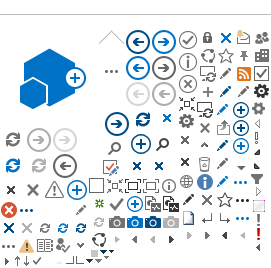Output
1) Background Paper
A background paper will be drafted by contractor prior to the workshop to provide a survey of global IoT cybersecurity practices. The background paper will provide an overview of current IoT cybersecurity policies and labeling schemes to highlight areas for further development and potential coordination among APEC members on IoT cybersecurity policies and labeling schemes. The background paper will serve as a reference document for the workshop discussion. The background paper will be a minimum of 12 pages in length, excluding annexes, and will be distributed to participants ahead of the meeting. Contractor will present on background paper findings as session 1 on day 1 (see rough agenda below).
2) Workshop
A two-day workshop will take place during the second TELWG meeting of 2025 (SOM 3) in Incheon, Korea.
The workshop will gather member economy representatives, experts, and stakeholders to discuss the state of IoT cybersecurity policy and pathways for progress. The discussion will aim to highlight the benefits of certification schemes for IoT products and avenues for coordination among APEC member schemes. Speakers from APEC member economy public sectors will present on cybersecurity certification programs (implemented or under development) as effective practices for IoT device security. Industry speakers will showcase their perspectives on how consistency of IoT cybersecurity standards and certification schemes promotes cross-border trade and supply chain security. Discussion will center on how APEC member economies can incorporate knowledge from these presentations in developing cybersecurity standards for IoT products as well as mechanisms for interoperability between member economy schemes. The workshop will also cover topics such as implementation and interoperability. The workshop will include activities to encourage active capacity building which will be built into the agenda over the two day workshop.
The workshop will close with the dissemination of a post workshop evaluation to ensure maximum responses from participants. The evaluation will gauge the usefulness and value of the workshop for participants.
Rough Agenda Day 1
- Session 1: Scene Setting: A Survey of IoT Cybersecurity Policies and Practices across APEC Economies
- Session 2: Presentations: Best Practices for IoT Cybersecurity Frameworks for IoT Cybersecurity Certification Programs
- Session 3: Standard Setting
- Session 4: Mechanisms for Interoperability
- Session 5: Networking Session
- Session 6: Implementation and Accreditation
Day 2
- Session 1: Label Design
- Session 2: Industry Adoption
- Session 3: SME Perspectives
- Session 4: Networking Session/Capacity Building Activity
- Session 5: Consumer Education
3) Summary Paper
A summary paper will be drafted by contractor, combining the information from the background paper with key takeaways from the workshop. The summary paper will be a minimum of 12 pages, excluding executive summary, table of contents, PowerPoint presentations from speakers/experts, and annexes. The summary paper will be published as an APEC Publication.
Outcome
1) We hope to reach APEC consensus on the value of a unique approach to IoT device cybersecurity.
2) We hope to observe an increase in specific IoT cybersecurity polices, approaches, or regulations across APEC member economies following the project's conclusion.
3) We hope to observe further crossover work between APEC fora on digital economy and cybersecurity following the project's conclusion.
Beneficiaries
The primary beneficiaries of this dialogue are policymakers and ICT industry stakeholders in APEC member economies with interest in IoT connected device security. Project participants will be from domestic and international standards and policymaking bodies as well as industry representatives across ICT and cybersecurity sectors. Tentative candidates include the United States Federal Communications Commission (FCC), the United States National Institute for Standards and Technology (NIST), the Cybersecurity Agency of Singapore, the Australian Cyber Security Center and other APEC member counterpart agencies as well as manufacturers and sellers of IoT consumer devices and industry associations such as The Consumer Technology Association (CTA) and the Information Technology Industry Council (ITIC).
Economies working to develop an approach to IoT cybersecurity or those that are seeing investment in the growth and security of IoT consumer products will be invited to share their views and experiences. The workshop will provide an opportunity for participants to engage with other economies and the business community, which will emphasize the benefits of a multi-stakeholder approach to cybersecurity best practices writ large. Developments in IoT cybersecurity policy are still emerging and are evolving quickly as the technology advances. The workshop will offer a platform to discuss challenges policymakers and industry are facing as well as opportunities for collaboration and tools helpful in addressing these challenges.
Secondary beneficiaries such as non-APEC economies looking to develop similar IoT cybersecurity labeling schemes and best practices will benefit from the information presented in the Summary Paper APEC Publication. 
